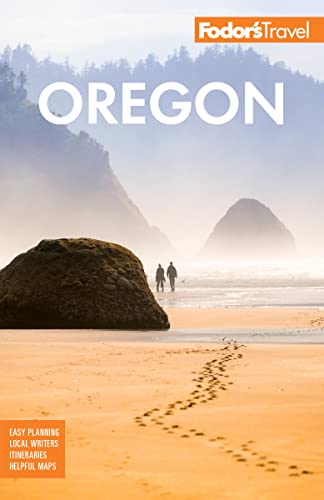Flavors of Oregon
Short of tropical fruit, there aren’t too many types of food that don’t grow somewhere in Oregon. Myriad fish and shellfish species dwell off the coast, while tree fruits line the windswept Columbia Gorge, and berries grow wild and on farms in the fertile Willamette Valley. A host of other fruits, vegetables, greens, and produce thrive in the temperate climate. Ranch lands, dairy farms, and acres of wheat and other crops round out an abundance that changes with the seasons.
Natural Bounty
Few states can match Oregon’s agricultural diversity, which is good news for both chefs and food-crazy locals.
Nuts: There’s a reason why hazelnuts—also known as filberts—are the official state nut. Oregon produces 99% of the country’s hazelnuts, which add a toasty-sweet flavor to meat, salads, desserts, coffee drinks, and more.
Berries: Blueberries, blackberries, and strawberries thrive in the lush Willamette Valley. But the state is home to lesser-known berries highlighted in local preserves, baked goods, and sweet sauces. Subtly tart loganberries are a cross between blackberries and red raspberries. Marionberries have a slightly earthy flavor, and are sometimes dubbed “the Cabernet of blackberries.”
Produce: Farmers' markets and restaurant menus are filled with locally grown staples like chanterelle mushrooms, rhubarb, kale, spinach, onions, lemon cucumbers, green beans, potatoes, peaches, cherries, apples, and pears.
Cheese: Open an Oregonian’s refrigerator and you’re likely to find a fat yellow brick (or a diminutive “baby loaf”) of Tillamook cheddar from the century-old collective of coastal creameries. The state’s broad swaths of grazing lands generate milk that fuels dozens of artisanal cheese producers. Some of the country’s best blue cheese comes from the Rogue Creamery in southern Oregon.
Seafood
With 362 miles of coastline, bays, tide flats, and estuaries, Oregon has a stunning variety of fish and shellfish off its shores. Restaurants and locals are attuned to the seasons, from the start of Dungeness season to the best months for oysters.
Salmon: Oregonians know king salmon as chinook salmon, but make no mistake—the largest Pacific salmon reigns as the prize catch of the state’s native cuisine. Silvery coho salmon also swim in the state’s coastal rivers. Oregon salmon is phenomenal simply grilled or roasted. Perhaps the most indigenous way to cook salmon is to smoke it, a practice that dates back to Native American dwellers.
Crab: Dungeness crab may be named for a town in Washington, but Oregon harvests more of these prized crustaceans than any other state. They are a delicacy simply boiled and served whole, but picked meat often appears in crab cakes or as a focal point in modern regional dishes.
Shellfish: Low tide on Oregon’s beaches can yield thin razor clams or a variety of bay clams. Mussels also grow in clusters along rocky coastal stretches while oysters are harvested in several spots. Mussels and clams are delicious steamed (perhaps in an Oregon wine or beer) or in a creamy chowder. Oysters are enjoyed raw on the half shell or lightly battered and fried.
Ocean fish: Pacific halibut, sole, rockfish, hake, lingcod, and the prized albacore tuna are all fished off the Oregon Coast. The Columbia River also offers up freshwater favorites like steelhead trout and Columbia River sturgeon.
Pacific Northwest Restaurants
Chefs across the country are in the throes of the farm-to-table movement, but in Oregon the close connection between chef and producer has long bypassed trend status. It’s simply how things are done. Restaurants like Clyde Common, Higgins, and Paley’s Place have been producing organic, locally sourced dishes since well before these approaches became national ideals.
Cuisine here tends to be modern and unfussy—a simple, slightly edgy celebration of what grows nearby. Dishes can have Asian, French, or other global influences, but the ingredients ground them solidly in the Northwest. But there is perhaps no more authentically Oregon preparation of meat or fish than cooking it with a crust of hazelnuts.
Portland is assuredly the epicenter of the state’s restaurant scene, but wine-country tourism has helped spread noteworthy cuisine to the Willamette Valley, Hood River and the Columbia Gorge, Bend, the Rogue Valley, and the coastal wine region.
Since it was first inhabited, Oregon has looked to the ocean to feed its population. Nevertheless, eastern Oregon cattle ranches provide a ready supply of sustainably raised beef that chefs love to showcase. The recent nose-to-tail dining trend has generated interest in other meats, including rabbit, pork, goat, and lamb, sourced from Oregon farms.
Wine
Pinot Noir grapes have been the central force of Oregon wine-making since the industry took root in the 1960s. Frustrated by Pinot’s poor performance in California, a few intrepid winemakers headed north to test out Oregon’s cooler climate. The Willamette Valley’s climate is similar to that of France’s Burgundy region, where Pinot Noir grapes have reigned for centuries. The rich farmland on the valley floor isn’t optimal for grape growing; most vineyards spread across the hillsides that ring the valley, taking advantage of higher elevation, thinner soil, and cool ocean breezes.
Oregon played a central role in America’s rediscovery of this famously finicky grape. Today the state is the country’s top producer of Pinot Noir. Oregon has 16 official wine-growing regions, though the vast majority of wineries are clustered in the Willamette Valley. Grapes also flourish in parts of southern Oregon and the Columbia Valley along the Washington border.
After Pinot Noir, Pinot Gris is the second most prevalent wine varietal in the state. The delicate and dry yet fruity white wine is somewhat of an unsung hero, since its darker Pinot cousin earns so much acclaim. Chardonnay, Merlot, and Riesling round out the state’s top wines. Oregon wines are generally highly affordable, and deliver a great value for the money, although top Pinot Noirs can cost a pretty penny.
Unencumbered by the wine-making traditions of France, or even California, Oregon vintners have taken the lead in growing organic grapes and producing wines using sustainable methods.




